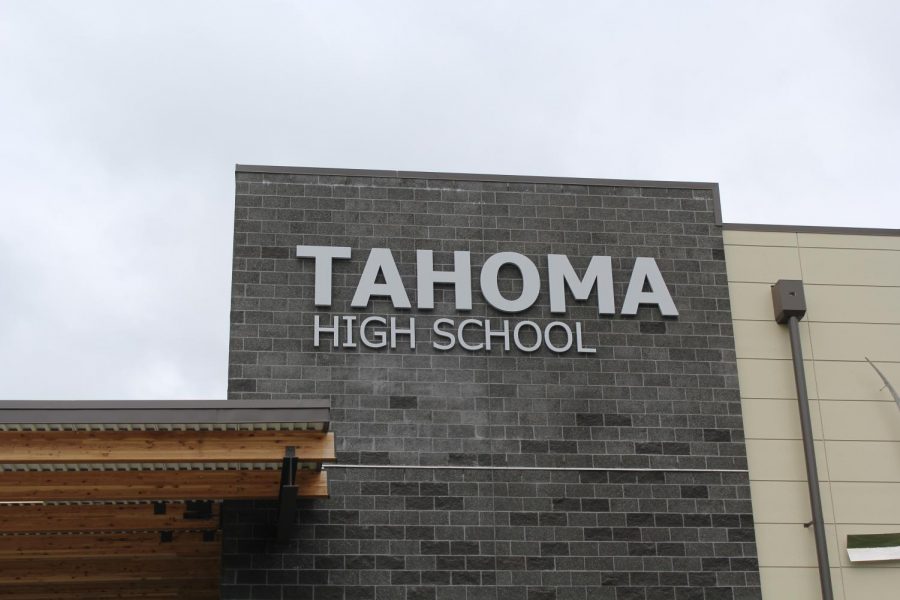Attending to the dollars
The students that aren’t passing through these doors every school day, are costing Tahoma hefty dollars.
May 31, 2018
Student attendance is a fundamental piece of most school districts. In the past couple years, Tahoma School District has been heavily pushing for better attendance from their students. They claim it is because students don’t learn when they’re not in school. However what they don’t mention is how the district loses a part of their state funding for each student who is absent. This raises the question of whether or not this is a genuine concern about the student, or a concern about losing money.
Districts nationwide receive funding in several different ways. However, Tahoma School District receives a significant amount of their funding from the state, which over the years I believe has caused the district to have many setbacks, the biggest being student attendance.
Within the past couple years, Tahoma has really been pushing for better student attendance. The school website is home to many articles surrounding the issue; In one article, they claim that “In addition to people at each school who monitor attendance, Tahoma also employs a Family Advocate who serves as the district’s truancy officer. The Family Advocate is responsible for ensuring the school district follows state attendance laws, especially for students who are chronically absent.The Family Advocate also oversees the district’s Truancy Board, which is a hearing board comprised of trained community volunteers. The board is used to assist students and families facing chronic unexcused absences and seeks remedies that will help the student stay in school. The board hearing is confidential and its guidance to students is not mandatory.” By the district making this a highlighted point on their website, it leads us to think that their overall intentions are more then anything to benefit student learning by doing everything in their power to help them come to school.
Nowhere on the website did it talk about the school losing state funding. However, it did state the districts overall chronic absence percentage in 2015, 16.3%, which is significantly higher than other districts in the area. But overall, Washington State has a particularly bad chronic absence rate. As of August of 2017, Washington has rolled out an attendance awareness initiative. The Office of Superintendent of Public Instruction stated that “Washington is currently ranked second worst in the nation, based on the U.S. Office of Civil Rights federal data collection. Washington’s state data collection showed the chronic absenteeism rate to be more than 16 percent in the 2015–16 school year. In other words, one in every six students (about 194,000 in total) were chronically absent”. This raises the question of whether or not Tahoma is pushing attendance because the state is requiring them to, because they don’t want to lose any money, or both.
There is no question that the district is becoming more and more strict about enforcing these attendance rules. As stated before, they have written many articles surrounding the issue including several statements such as “Missing 10 percent (or about 18 days) increases the chance that your student will not read or master math at the same level as their peers. Students can still fall behind by missing just a day or two every few weeks.”
Since Tahoma is focusing on the aspect that being at school is fundamental to student learning, I decided to look into how they award or discipline students who don’t have several absences. Starting this 2017-2018 school year, any upperclassmen who have missed more than 8 days of school the prior semester was not able to participate in off-campus privileges during power hour. This can be seen as a obvious discipline measure, but also a reward for those who had a good attendance record. Also, unexcused absences that are left for more than 48 hours without any reasoning result in closed lunch which is once again an act of discipline.
The reasoning behind the districts push for better attendance seems to be directed mostly toward bettering student learning and their ability to grow in school. However, one will never truly know if it also involves the district not wanting to lose state funding. On paper, it seems as though this would all be because they want students to be able to live up to their full potential.
Superintendent Rob Morrow stated, “We need the help of parents and students if we are going to reduce absenteeism…We want students to be present every day. We understand that there will be times when students must miss school due to illness or other legitimate reasons. But we also believe that school must be the top priority for students so that they will have the best chance to succeed now and in their adult lives.”
When it comes down to it, Tahoma cares about it’s students. They want them to be at school, to be able to better their learning. The fact that Tahoma has to push for this so much highlights the issue of how bad Washington State students attendance record really is.
If anything, I believe Tahoma needs to be working on ways to make kids want to go to school and not punishing them for not. Students want to come to a place where they feel welcome. With more and more students flooding into the district, there’s no better time than now to start carving new paths and new ways to engage kids in school.




